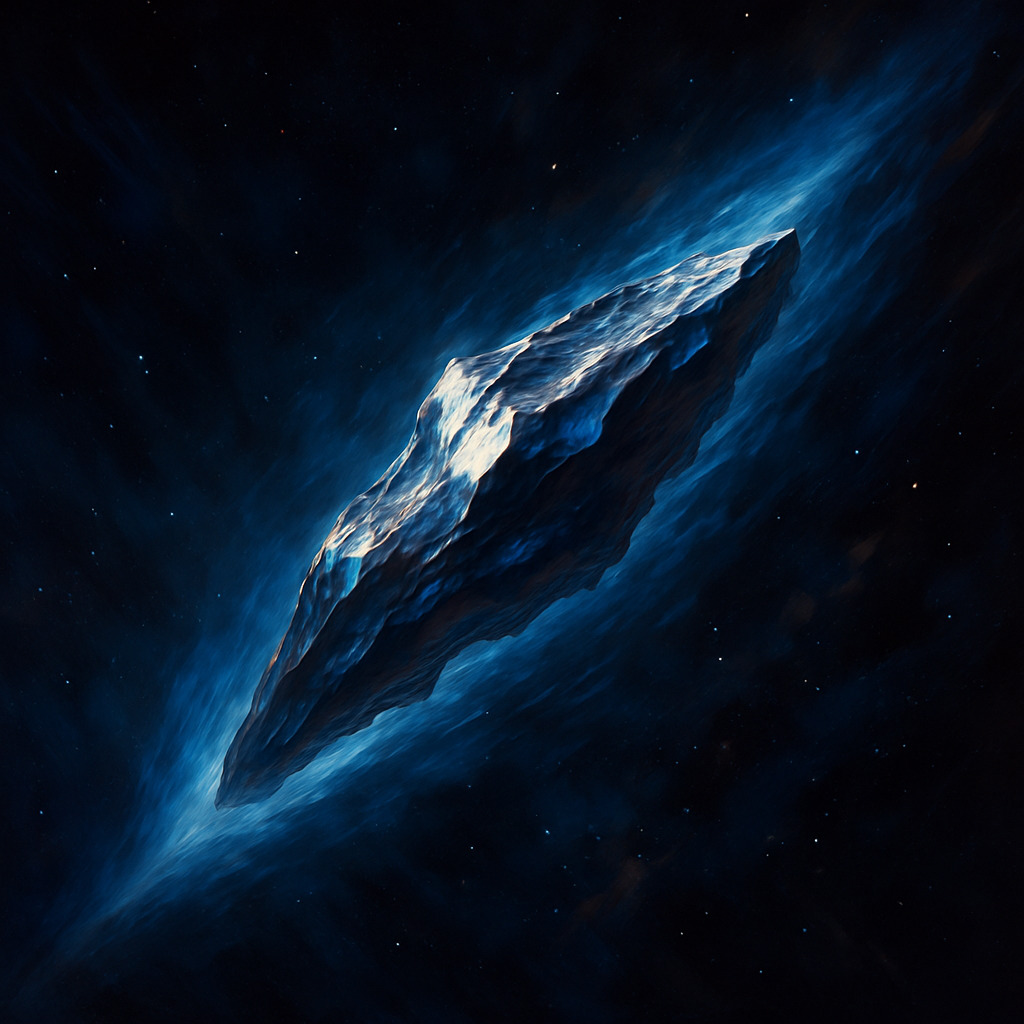🌠 Introduction
It came from a place we don’t know — cutting across our Solar System at breathtaking speed, never to return.
Its name is 3I/ATLAS, and for astronomers it’s more than just another interstellar traveler: it’s a cosmic riddle.
Recent analyses revealed that the object seems to be wrapped in nickel and almost devoid of iron — a composition strikingly similar to artificial metal alloys created by humans.
So, is it a misunderstood natural body… or the first technological visitor from deep space?
🪐 1. What We Really Know About 3I/ATLAS
Discovered on July 1, 2025 by the Asteroid Terrestrial-impact Last Alert System (ATLAS) in Chile, 3I/ATLAS immediately caught the attention of observatories around the world.
Its hyperbolic orbit proves it doesn’t belong to our Solar System — it’s an interstellar object, the third one ever detected after ʻOumuamua (2017) and 2I/Borisov (2019).
With a diameter of about 5.6 km, it’s large enough to be observed by both Hubble and James Webb, which confirmed it has an active gas tail — behaving, at first glance, like a comet.
Yet, something in its chemical composition refused to fit the mold.
⚙️ 2. Nickel Yes, Iron No: The Metallic Mystery
Spectroscopic observations made in August detected strong emissions of nickel atoms (Ni) — but almost no iron (Fe).
That’s a big deal, since comets and rocky bodies typically contain both metals in comparable amounts.
Even stranger, the released volatile nickel mirrors the industrial processes we use on Earth to refine nickel into metallic alloys through compounds like Ni(CO)₄.
For astrophysicist Avi Loeb, the finding rekindled an old, provocative question:
Could 3I/ATLAS be something not entirely natural?
👽 3. Avi Loeb’s Hypothesis: The “Interstellar Artifact” Theory
In a recent paper published on arXiv, Avi Loeb and his Harvard team proposed that the combination of:
-
anomalous composition (nickel without iron),
-
a sun-facing tail, and
-
a precise trajectory aligned with the ecliptic plane,
could be consistent with a technological object, perhaps a degraded interstellar probe or solar sail fragment.
Loeb writes:
“We can’t exclude the possibility that 3I/ATLAS is a remnant of a spacecraft from another civilization.”
He clarifies, however, that the purpose of his analysis isn’t to sensationalize, but to remind us that science advances by not ruling out the improbable.
🔬 4. Natural or Artificial? The Counterarguments
Most of the scientific community remains skeptical.
Researchers from NASA and ESA suggest that under certain temperatures and pressures, nickel and iron can separate naturally, especially in environments poor in oxygen or rich in carbon.
Other hypotheses propose selective surface vaporization: nickel may simply sublimate more easily than iron as the object approaches the Sun.
So while the anomaly is fascinating — it’s not, at least yet, proof of alien engineering.
💫 5. Why We’re So Obsessed with Cosmic Mysteries
The case of 3I/ATLAS reveals something about us as much as it does about the universe:
we crave connection and meaning in the vastness of space.
Every interstellar object reminds us how limited our understanding truly is.
ʻOumuamua already blurred the line between natural and artificial; now 3I/ATLAS deepens the question — showing that sometimes, nature can look as engineered as a machine.
And perhaps that’s what makes it so irresistible.
🔭 6. What Happens Next
In the coming months, James Webb Space Telescope (JWST) and ALMA will continue analyzing its spectral signature, hunting for definitive clues about the nickel purity and the possible presence of other elements.
Depending on what they find, 3I/ATLAS could become the first interstellar object ever chemically mapped in detail — a time capsule from another star system… or a forgotten artifact drifting through eternity.
Either way, it’s a cosmic mirror, reflecting our curiosity back at us.
🌌 Conclusion
It may not be an alien probe. It probably isn’t.
But 3I/ATLAS represents the best of science: a mystery that ignites curiosity and pushes us to explore further, ask better questions, and sharpen our instruments.
Because, as Carl Sagan said, “The truth may be more wonderful than any fantasy.”
And if one day we do discover that a shiny piece of metal from another star was a message from someone else… at least we’ll have been listening.






